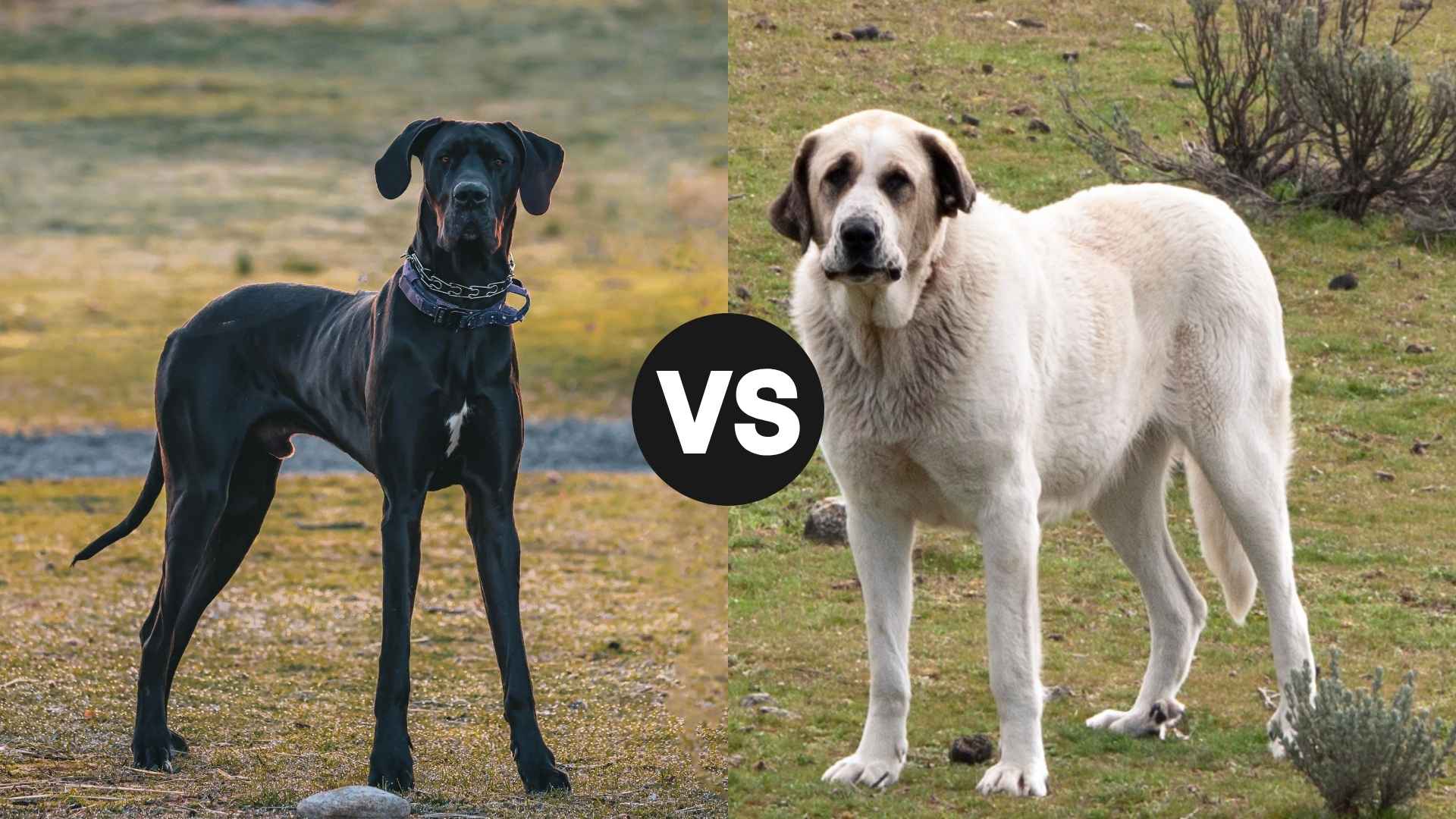When it comes to giant dog breeds, two names often stand head and shoulders above the rest—literally: the Great Dane vs Mastiff debate is a classic among big dog lovers. Both the Great Dane and Mastiffs are known for their enormous size, strength, and loyal nature, but they come from very different backgrounds and offer unique qualities.
The Great Dane, a German-born “gentle giant,” is among the largest dog breeds that was once used to hunt wild boar and guard estates. Recognized by the American Kennel Club (AKC) in 1887, Danes are nicknamed “Apollo of dogs”, despite their intimidating height. Danes are friendly, affectionate, and thrive in a family setting.
On the other hand, the Mastiff boasts an ancient lineage, with roots stretching back to 2500 BCE. Known for their immense build, dignified demeanor, and black-masked faces, Mastiff-type dogs were once used as war dogs and protectors, and they remain courageous yet calm companions today.
So, which of these gentle giants is right for you? Let’s compare the Great Dane vs. the Mastiff to find out.
Great Dane vs. Mastiff
When comparing the Great Dane vs the Mastiff, both breeds stand out as impressive giants with rich histories and unique traits. The Great Dane (also known as the German Mastiff) developed in Germany over 400 years ago, was originally bred for boar hunting. Interestingly, its name comes from the French term Grand Danois (“Big Danish”), even though the breed has no ties to Denmark.
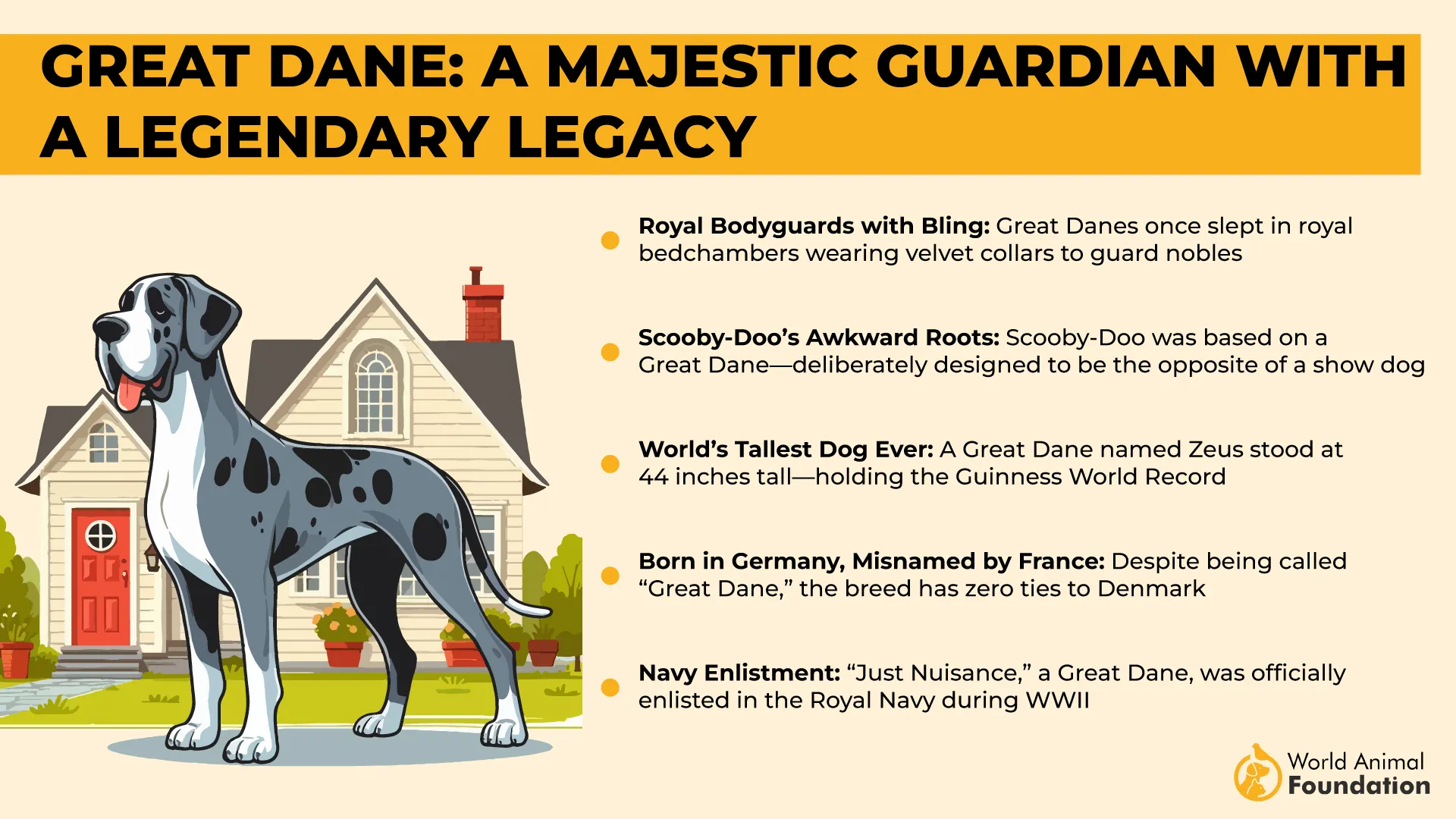
Despite its towering height, making it the tallest of the working breeds, it’s known for being swift, alert, and friendly. With its square-jawed head, graceful body lines, and short coat in colors like harlequin, brindle, and fawn, the Great Dane combines elegance with strength. Historically, Danes had their ear cropped to prevent injuries during hunting, though it is banned now in many countries.
In contrast, the Mastiff is an ancient powerhouse, with a lineage tracing back to 3000 BCE. Once used as a war dog and arena fighter by the Romans, the English Mastiff was later a participant in brutal blood sports.
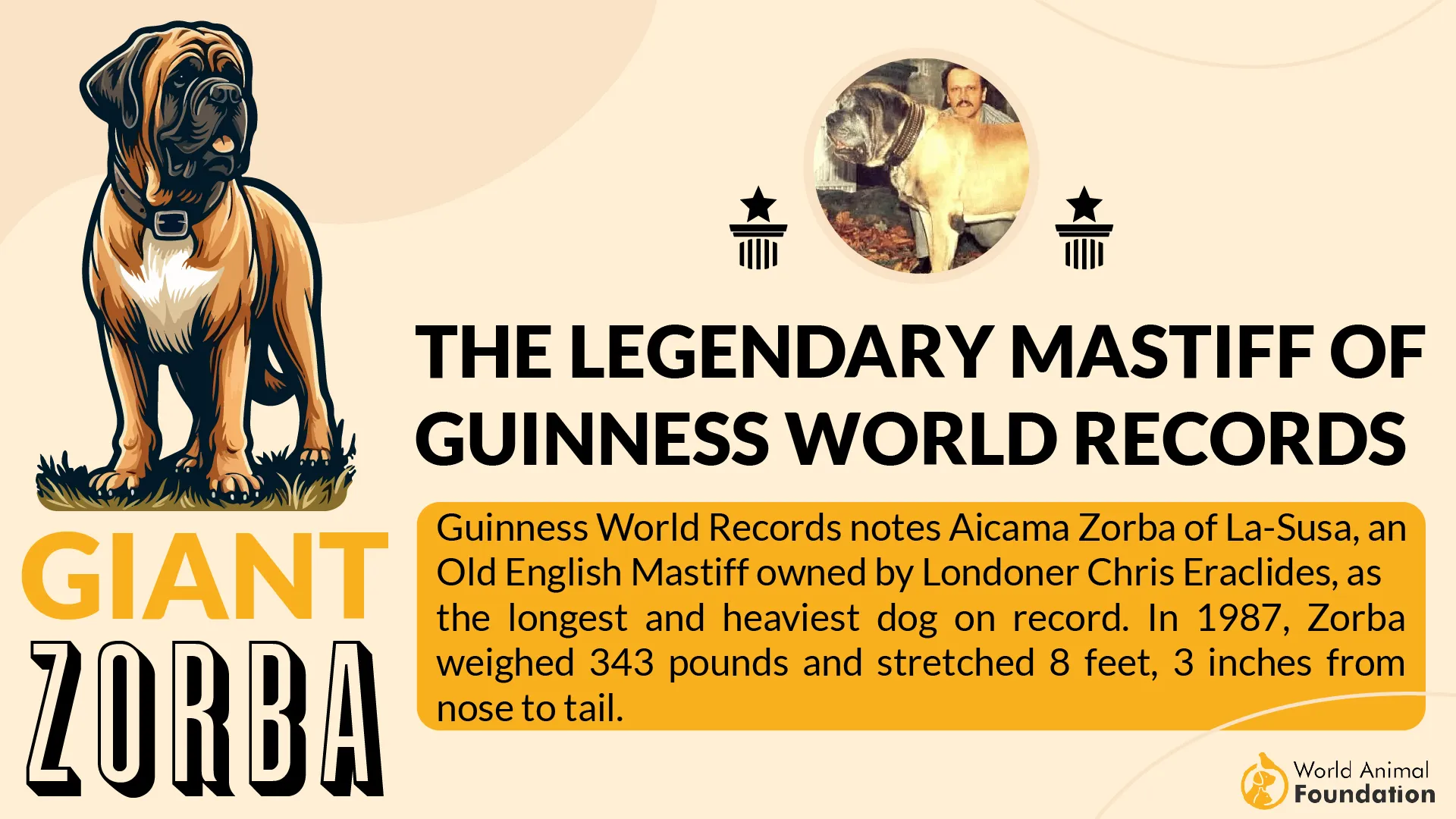
Despite its fierce past, today’s Mastiff is gentle, dignified, and loyal. It’s recognized for its massive frame, broad head, and signature dark muzzle and ears. Coat colors include apricot, silver fawn, and brindled fawn, always projecting an aura of quiet strength and protection.
Great Dane vs. Mastiff: Core Differences
When it comes to sheer height, the Great Dane takes the crown as one of the tallest dog breeds in the world. These gentle giants typically stand between 28 to 32 inches at the shoulder, with some individuals appearing even taller when on their hind legs—like the famous Zeus, who reached an incredible 7 feet 4 inches, and earned a Guinness World Record for the tallest living (male) dog.
Great Danes have a sleek, short coat that comes in a range of striking colors, including harlequin, merle, fawn, blue, and black. Though they shed moderately, a weekly brushing keeps their coat looking tidy. With their elegant build and calm temperament, Great Danes combine grace with a warm, friendly nature.
The Mastiff, by contrast, is built for power and mass. Though slightly shorter at 28 to 31 inches, it more than makes up for it in weight—males often tip the scales at 160 to 230 pounds. In 1989, a Mastiff named Zorba made history by setting a world record as the largest dog ever, weighing an astonishing 343 pounds at eight years old, as per Britannica.
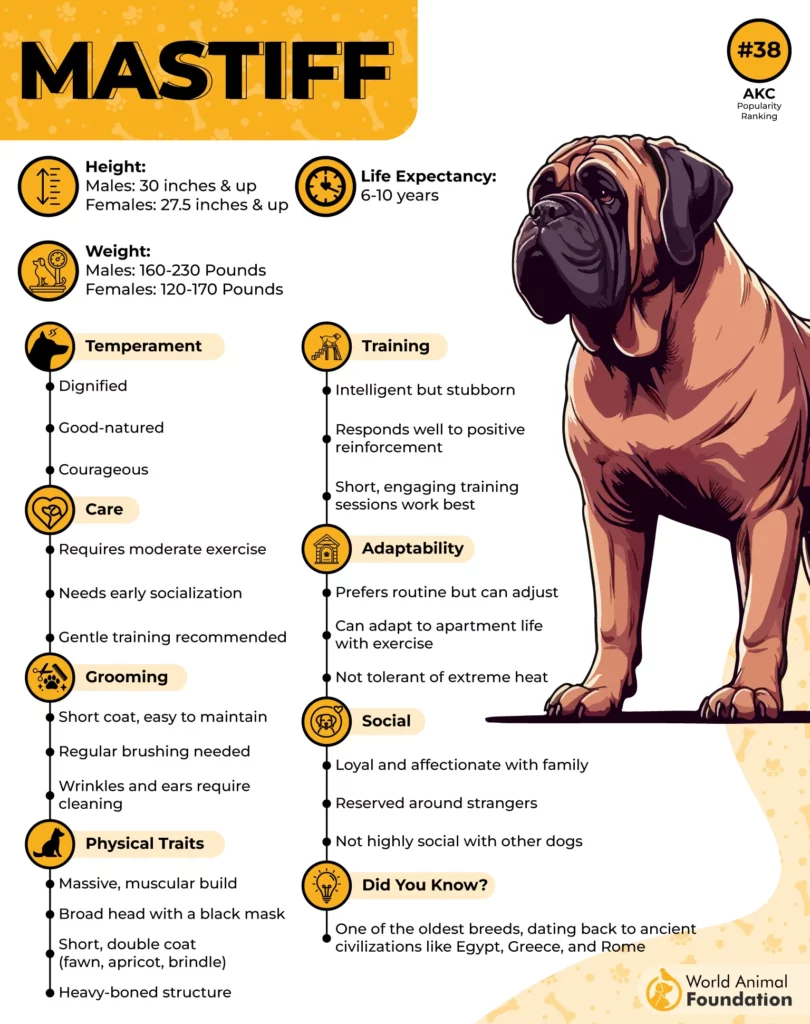
The Mastiff’s short, coarse coat comes in rich shades such as apricot, silver fawn, or brindled fawn, always paired with a distinctive dark muzzle and ears. Beneath their imposing appearance, Mastiffs are affectionate and loyal companions, known for their calm demeanor and protective instincts.
Temperament Comparison: Great Dane and Mastiff
When comparing temperaments in the Great Dane vs Mastiff debate, both breeds are affectionate giants, but there is a big difference in how they express their personalities. The Great Dane is known for its gentle, sociable nature and is typically friendly toward both strangers and other dogs.
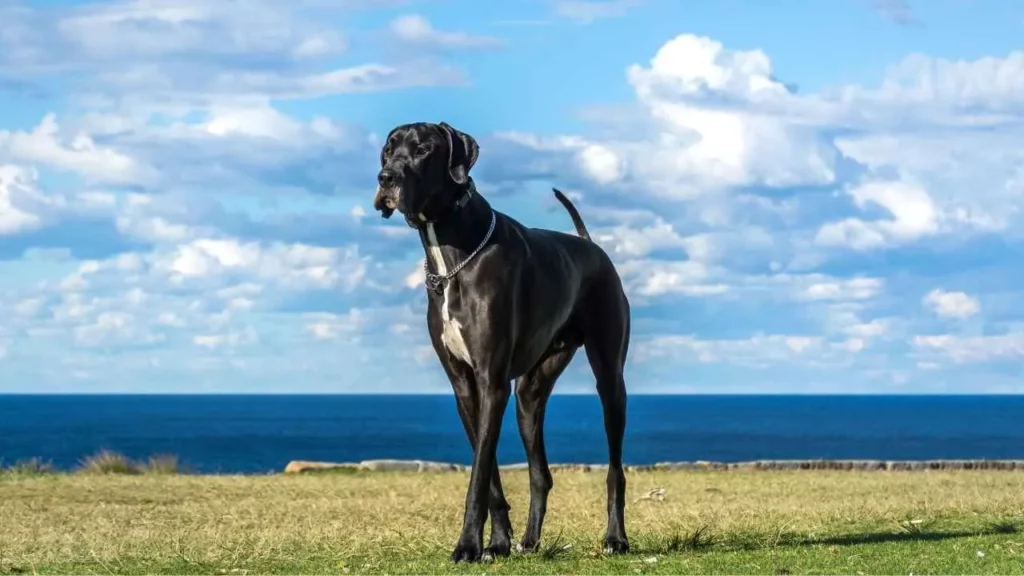
While it can be playful, its energy levels are moderate, and it tends to settle down quickly. Easy to train yet not particularly fast to respond, the Great Dane makes a reliable watchdog without being overly vocal and aggressive. Despite its calm demeanor, its large size and strength may pose challenges for families with small children or elderly members.
The Mastiff, on the other hand, has a calm and loyal disposition, often attempting to curl up like a lapdog despite its massive frame. While deeply affectionate and devoted to its family, it tends to be more reserved or aloof around strangers.
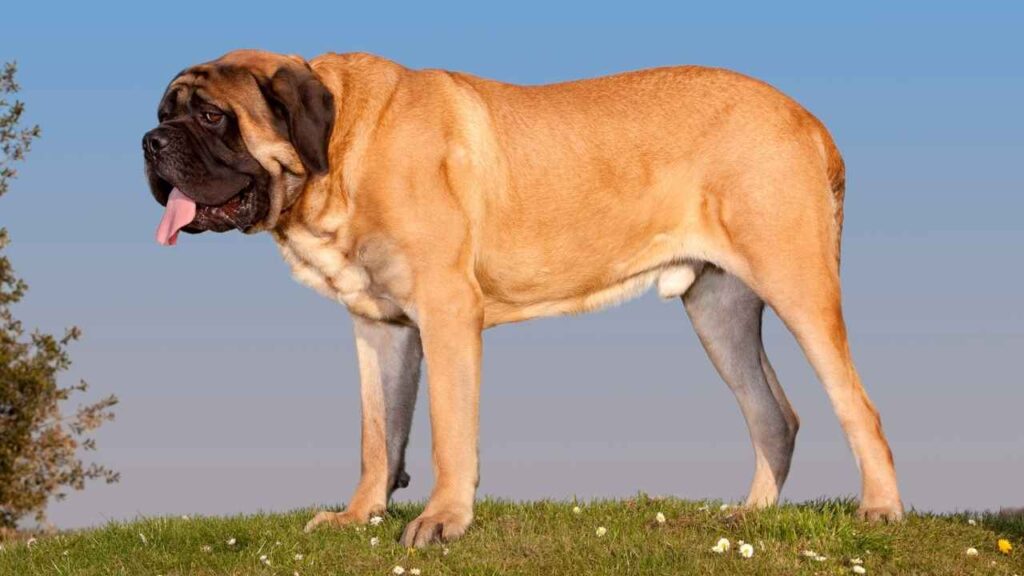
It’s generally good with other pets, including cats and dogs in a multipet house, but like the Dane, its bursts of play are short-lived once it reaches maturity. Though slower to react, the Mastiff is eager to please and highly protective, making it a gentle yet formidable guardian for families.
Trainability and Intelligence: A Comparative View
When it comes to trainability and intelligence, the Great Dane is eager to please and generally responds well to consistent, positive reinforcement. Early socialization and obedience training are essential for this large and powerful breed to ensure they grow into well-mannered adults.
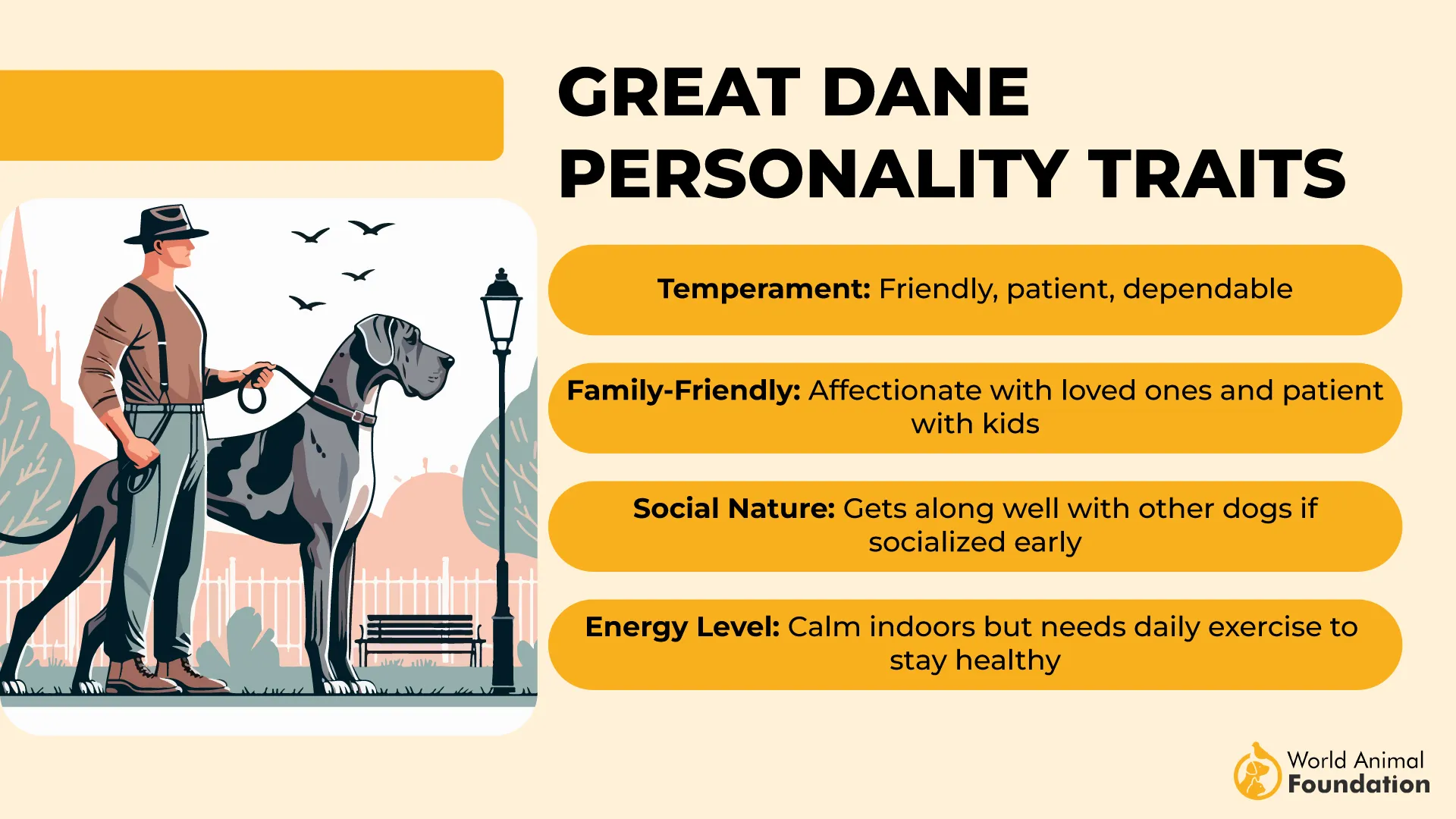
Great Danes thrive on human interaction and enjoy being included in daily activities. Their sociable nature makes them quick learners, especially when training is firm yet gentle. Exposure to new environments, people, and other animals from a young age helps shape a confident, well-adjusted companion.
Mastiffs, on the other hand, are equally intelligent but have a more independent and sometimes stubborn streak. They pick up commands quickly but tend to get bored with repetitive drills and may decide to nap instead of participating. Training sessions with a Mastiff should be short, fun, and full of variety.
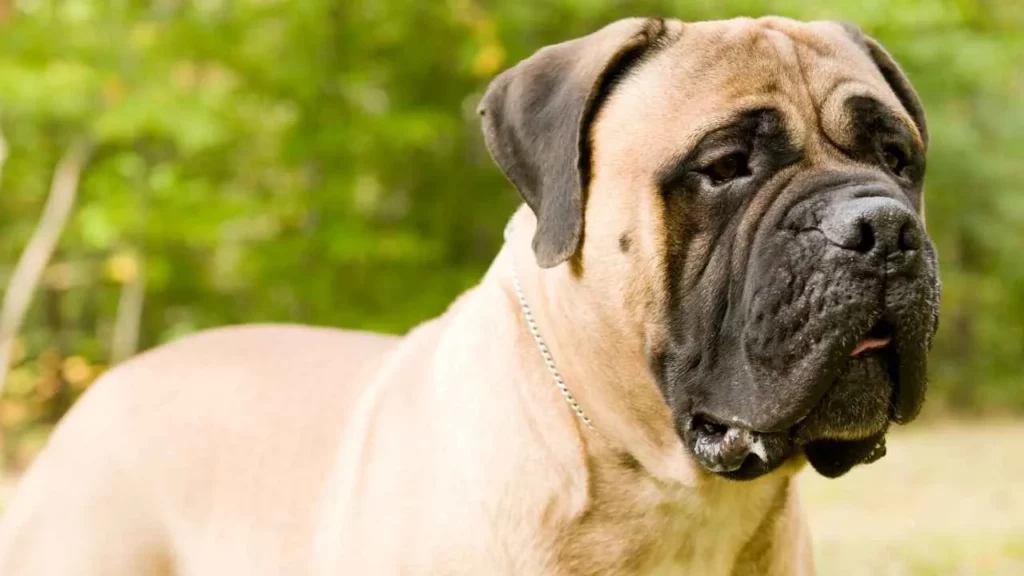
These sensitive giants respond best to gentle praise and positive rewards, as harsh tones can hurt their feelings. Making eye contact and using body language goes a long way with this emotionally intuitive breed. With patience and respect, Mastiffs can be trained effectively in both obedience and specialized tasks.
Common Health Issues in Great Danes and Mastiffs
Great Danes are majestic but short-lived giants, with a lifespan averaging 7 to 10 years. One of their most serious health problem is gastric dilatation volvulus (GDV)—a life-threatening bloat condition that can require emergency surgery. Preventative gastropexy surgery and feeding smaller, frequent meals are often recommended.
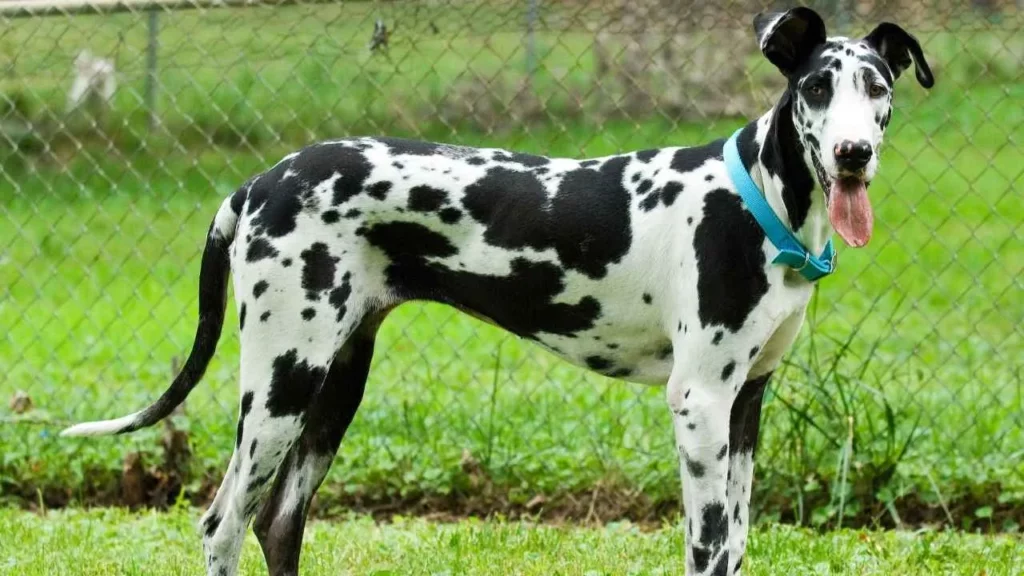
These dogs are also prone to cardiomyopathy, a potentially fatal heart condition, and hip dysplasia, which can be minimized by feeding large-breed puppy food to control growth rates. Additionally, merle Great Danes should not be bred together due to the risk of producing “double merles,” which often suffer from significant hearing and vision impairments, states Britannica.
Mastiffs, with a typical lifespan of 6 to 10 years, are also vulnerable to several serious health issues. They may suffer from hip dysplasia, degenerative myelopathy, epilepsy, and gastric dilatation volvulus, much like Great Danes. However, they are particularly prone to cancer, including osteosarcoma and lymphoma, and a variety of eye disorders such as entropion, ectropion, and cataracts, according to PetMD.
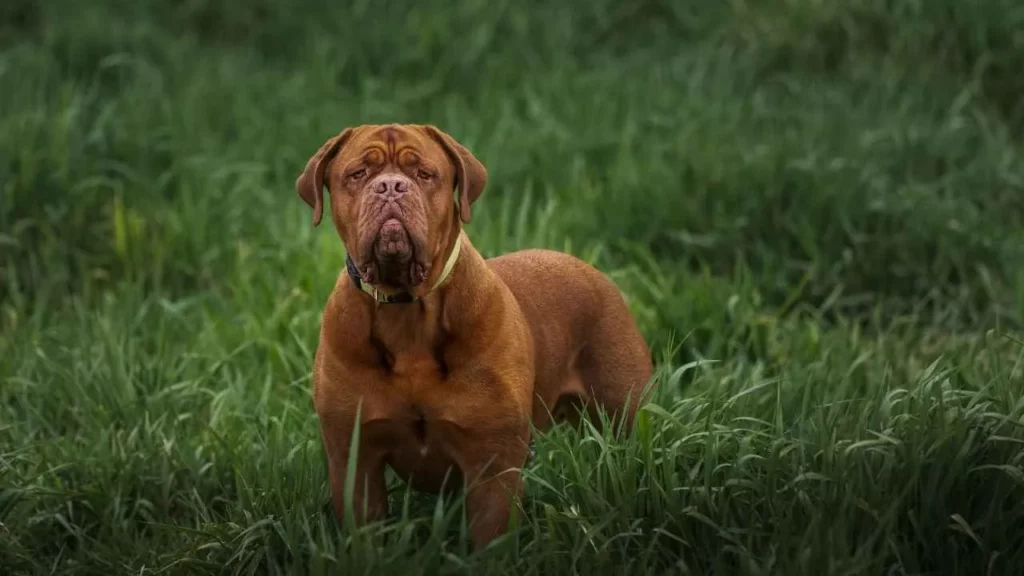
Seasonal allergies are also common, often presenting as itchy skin or ear infections. While many of these conditions can be managed or treated, early diagnosis, proper nutrition, and responsible breeding are crucial for maintaining a Mastiff’s health.
Life Expectancy: Great Dane vs. Mastiff
Great Danes typically live for 7 to 10 years, which is relatively short but expected for a giant breed. Their size contributes to age-related health issues developing earlier than in smaller dogs. Providing a balanced diet, daily exercise, and preventive veterinary care can help extend their lifespan and improve quality of life.
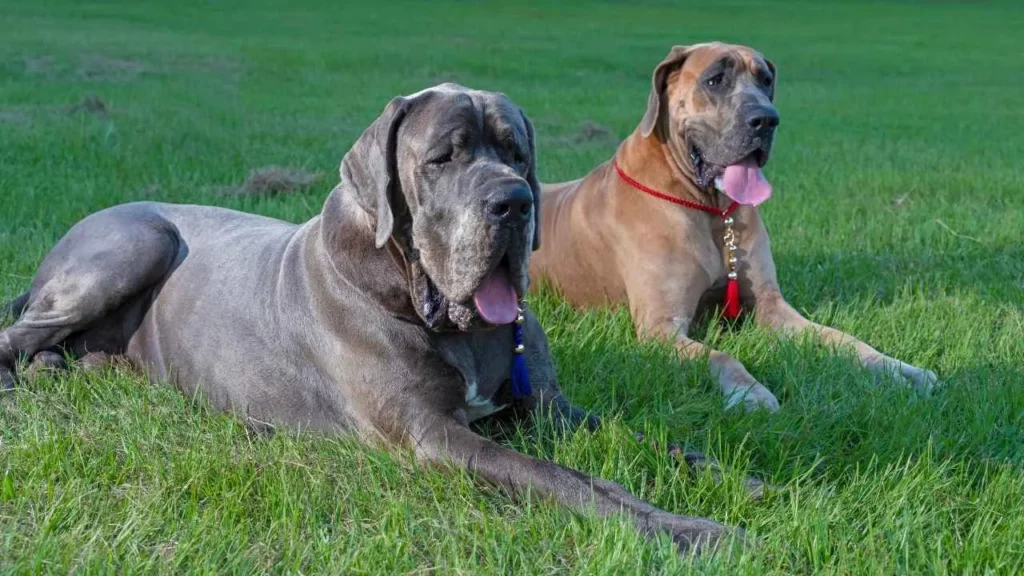
Mastiffs, being even larger and heavier, generally have a slightly shorter lifespan of 6 to 10 years. Like Great Danes, they are prone to health conditions common in giant breeds, which can impact longevity. Keeping them healthy with proper nutrition, weight management, and routine vet checkups is essential to maximizing their life expectancy.
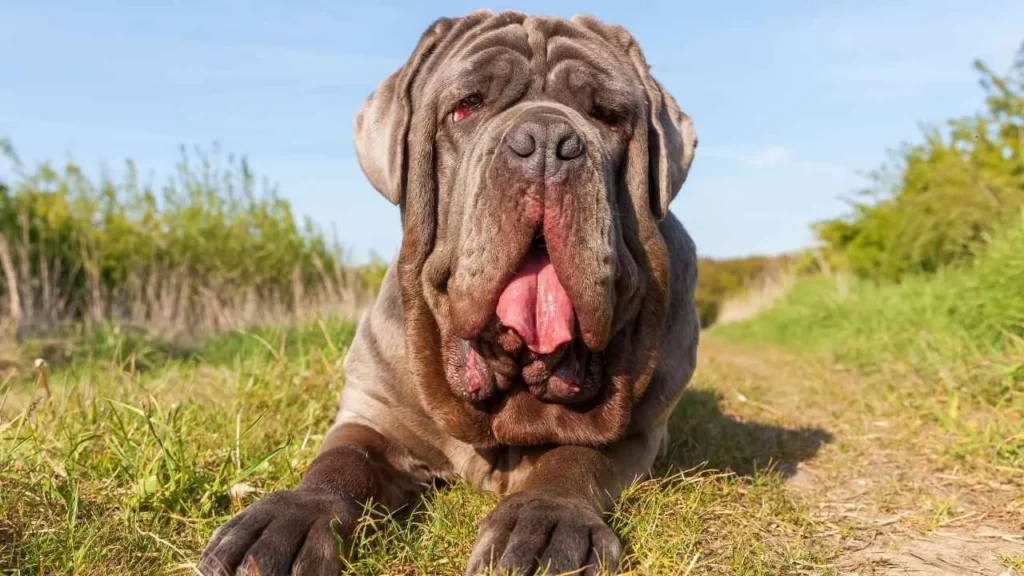
Conclusion: Choosing Between a Great Dane and a Mastiff
Choosing between a Great Dane and a Mastiff ultimately depends on your lifestyle, space, and expectations as a dog owner. Both are popular breeds known for their size, loyalty, and companionship—but they differ in temperament, care needs, and physical traits.
The Great Dane is taller, more elegant, and better suited for those who want a friendly yet alert companion with long legs and a presence fit for dog shows. Meanwhile, the Mastiff, once a chamber dog and protector, is bulkier and more reserved, making it an ideal guard dog for those seeking quiet strength in their home.
Health problems like wobbler syndrome, hip dysplasia, and over-exercising risks are concerns for both breeds, so choosing pups from a reputable breeder is crucial. Whether you adopt from a shelter or go through breeders, these dogs require careful training, space to thrive, and dedicated care. With the right match, either breed can offer unmatched protection and affection.


